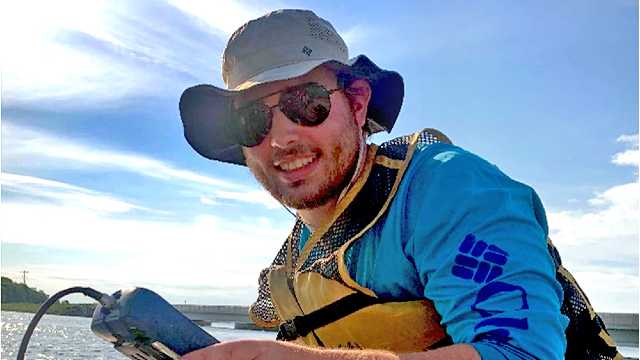The Chippewa Luce Mackinac Conservation District is happy to welcome Jacob Hartman as their new Watershed Technician.
Hartman recently graduated from Lake Superior State University with a Bachelors degree in Fisheries and Wildlife Management. Originally from Hartland, Michigan Hartman has lived in Sault Ste Marie for two years and has been visiting family in the U.P. since he was born.
He enjoys everything outdoors related: hunting, fishing, hiking, and especially protecting our water resources! Hartman will be working mostly within the Munuscong River Watershed, but can be available to assist folks with their water resource concerns anywhere within the Conservation District.
Watersheds are an area of land that drains towards a single body of water. For instance, all the rain that falls on the Munuscong River Watershed eventually ends up in the Munuscong River and then Munuscong Bay. Water quality issues are best managed on a watershed basis because the major concerns may change in each watershed.
Streambank erosion is one of the major concerns in our watersheds. Erosion is the active destruction of soil from wind or water. This is a natural process that streams and rivers use to carry soil throughout the landscape, carving a path as they go. However, the rate of erosion has increased due to humans.
Riparian zones are a very important part of controlling erosion and reducing pollution. A riparian zone is simply the land alongside a body of water. When these areas are void of vegetation, the soil is more likely to be carried away. The roots of vegetation, whether it be grass, shrubs, or trees helps stabilize the soil. Red-Osier Dogwood, Highbush Cranberry, Red Maple, White Spruce, and many other native plants grow well along streams in the Eastern Upper Peninsula.
But why is increased soil in the water a bad thing? When erosion occurs the nutrients, mainly Nitrogen and Phosphorus, contained in the soil and rocks are released into the water. This can contribute to algal blooms from higher concentrations of nutrients. Some algal blooms can be harmful to people, animals, and fish. Erosion directly affects fish too.
Sediment can make it hard for aquatic plants to grow, hinder feeding abilities, stunt growth and development, and disrupting small insects that are the base of the food chain. Sediment itself can also cause problems with drinking water. Water that is murky from sediment can be more expensive to treat and may have an altered taste or odor.
The majority of these problems can be avoided if vegetation such as grasses, shrubs, and trees, are left alone along streams. Conservation organizations recommend that riparian zone be between 30 and 50 feet wide, and in some cases up to 300 feet. High nutrient content runoff from fertilizers, roadways, and farms are also reduced by vegetated riparian zones. The plants catch the nutrients before it gets into the water.
It is also beneficial to not mow along any streambank or shoreline or directly to the edge of the water. Leaving an uncut section will help stabilize the soil and reduce erosion.
If you are located in the Munuscong River Watershed and are looking for help with your erosion concerns please reach out to Jacob as there may be financial assistance available to help you. If you have general questions about watersheds or would like to help protect your watershed, contact Jacob Hartman at 906-748-0837 or by email at Jacob.hartman@macd.org.












